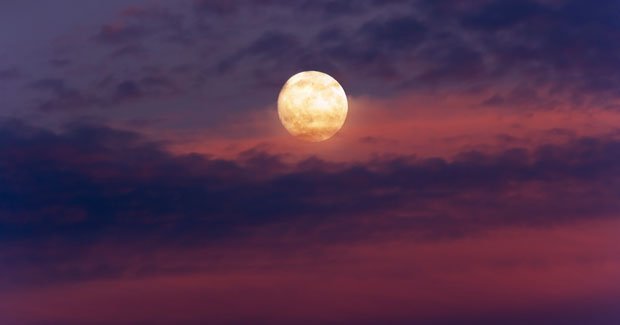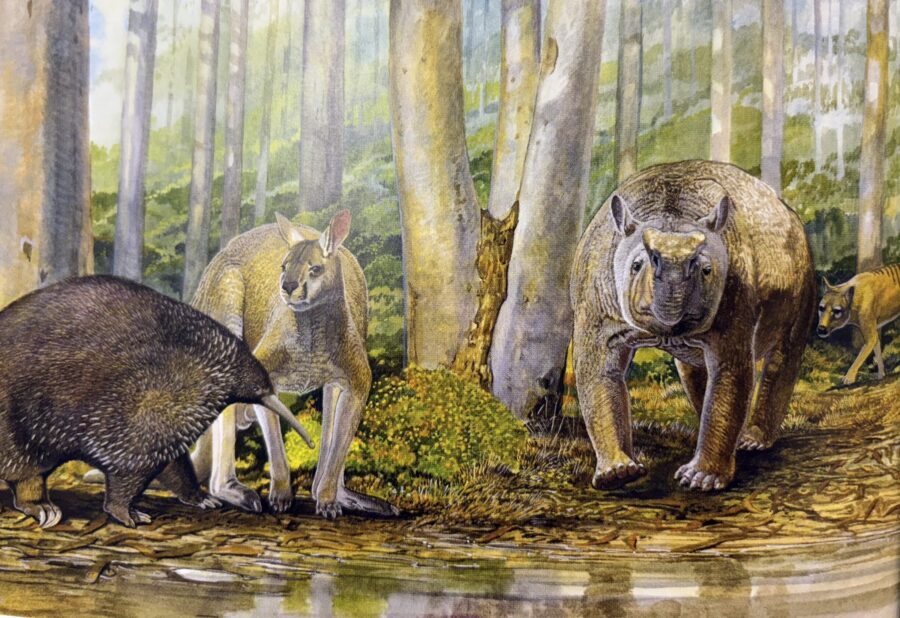What is a ‘black moon’?
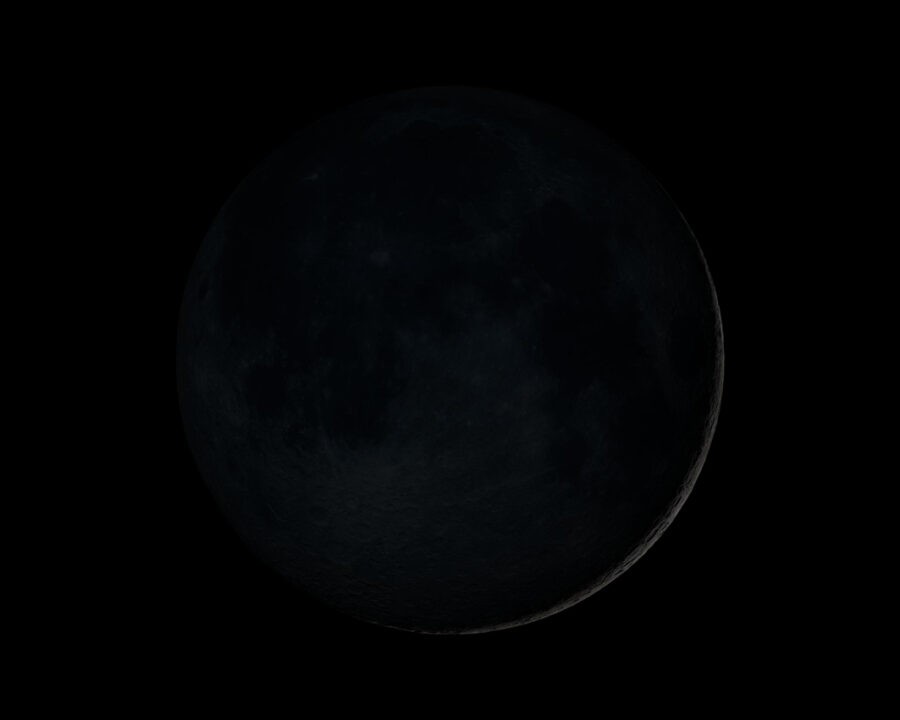
While you’ve probably heard of a ‘blue moon’ before, this might be the first time you’ve encountered its ominous-sounding counterpart.
You’re not alone. In fact, neither ‘blue moon’ nor ‘black moon’ are astronomical terms. They describe the moments when the lunar calendar and our calendar year fall out of alignment.
So what is a black moon? The current definition has nothing to do with the actual colour of the Moon.
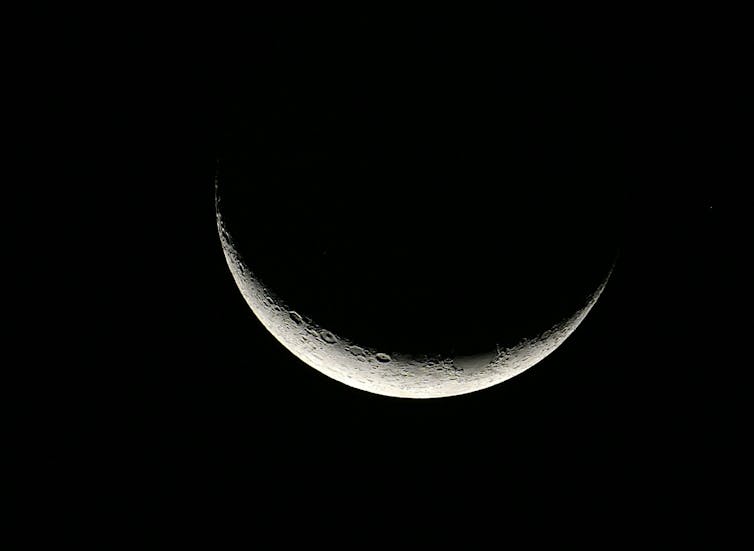
Full moon, half moon, new moon
Let’s start by defining some key lunar terms. The Moon is “full” when its whole face or disc is illuminated by the Sun. We typically get treated to a nice, bright, full moon at night when the Sun and Moon are opposite each other with Earth in-between.
A “new” moon is when none of the Moon’s face is illuminated and the far side is illuminated instead. This happens when the Moon is up during the day, because the “far side” of the Moon is illuminated when the Moon is in-between Earth and the Sun.
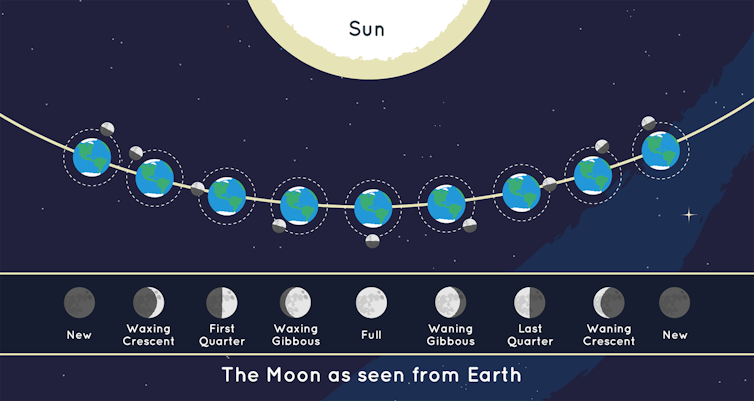
A lunar cycle – the time it takes for the Moon to go from new, to full, to new again – is approximately 29.5 days long. Most years there are twelve full moons and twelve new moons.
But the 29.5 day cycle doesn’t fit perfectly into a calendar year, so every now and then there are thirteen full or new moons in a calendar year. Seven years out of every nineteen years will have thirteen full or new moons instead of twelve.
Blue moon, black moon
A blue moon is when we get a thirteenth full moon in one calendar year. Conversely, a black moon is when we get a thirteenth new moon in one calendar year.
Because these terms are entirely colloquial, there are a couple of definitions used for these extra moons. One is based on seasons and the other on simple calendar months.
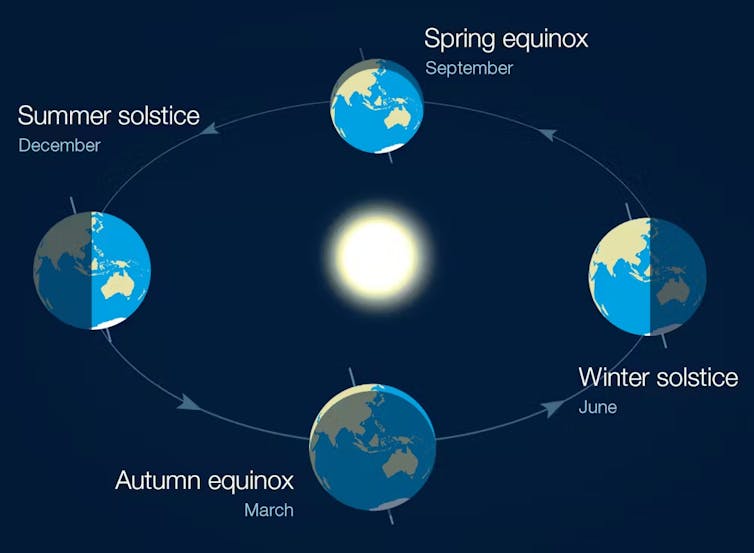
Seasonal moons
A calendar year has four seasons, divided by equinoxes and solstices (see above).
Each season is roughly three months long and typically has three full moons. Some cultures give each of those seasonal full moons a special name – you’ve likely heard of “wolf moon”, “strawberry moon”, “harvest moon” and others from American folklore, for example.
Every two or three years, however, we get an extra full moon in a season. When that happens, the first, second and fourth full moons keep their usual names while the third one becomes a “blue moon”.
You’d think the idiom “once in a blue moon” comes from this name, but the folklore name is actually relatively recent. In the 16th century, saying the “moon is blue” was more likely a way to refer to something being false or absurd.
Meanwhile, the third new moon in a season with four new moons is a “black moon” – a term than can only be traced to around 2016.
Calendar moons
The other definition for blue and black moons is related to calendar months.
A blue moon is the second of two full moons in one calendar month, while a black moon is the second new moon in a calendar month.
The black moon this month is a seasonal black moon and it’s happening on August 23. The next calendar-month black moon will happen on August 31 2027.
The next seasonal blue moon will be on May 20 2027 and the next calendar-month blue moon will be on May 31 2026.
You can’t see a black moon, but look at the sky anyway
We can’t actually see the black moon. The Moon will be up during the day and the far side of it will be illuminated.
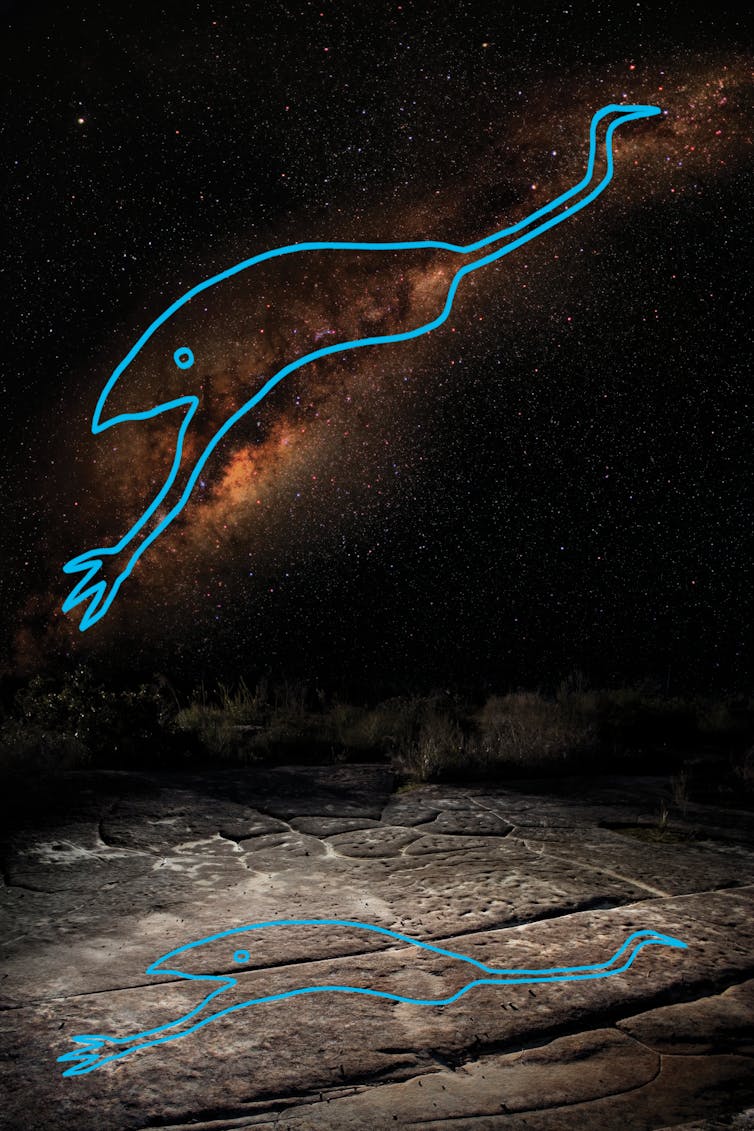
But new moons in general bode well for keen stargazers. The full moon outshines a lot of the night sky, because it’s about 33,000 times brighter than the brightest star in the sky, Sirius.
When there’s a new moon, the night sky is nice and dark, giving you more opportunities to see stars and constellations.
During the black moon on August 23 this weekend, the celestial emu or Gugurmin will be beautifully positioned overhead soon after dusk in the southern hemisphere.
If you’re in the southern hemisphere somewhere very dark and free from light pollution, you’ll be able to spot the Magellanic Clouds, two small galaxies that are interacting with our Milky Way galaxy. Saturn will be visible all night, and Venus and Jupiter will be low on the northeastern horizon just before dawn.
Even though the black moon isn’t a significant astronomical event, it gives us the chance to take in the night sky on a dark, Moon-free night.
About the author:: Laura Nicole Driessen is Postdoctoral Researcher in Radio Astronomy at University of Sydney
This article is republished from The Conversation under a Creative Commons license. Read the original article.
